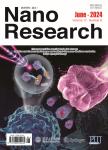On-chip detection of a single nucleotide polymorphism without polymerase amplification
On-chip detection of a single nucleotide polymorphism without polymerase amplification作者机构:Department of Mechanical and Aerospace Engineering University of California Davis California 95616 USA Division of Nephrology Department of Internal Medicine University of California Davis California 95616 USA Medical Service Sacramento VA Medical Center Sacramento California 95655 USA
出 版 物:《Nano Research》 (纳米研究(英文版))
年 卷 期:2014年第7卷第9期
页 面:1302-1310页
核心收录:
学科分类:0710[理学-生物学] 0808[工学-电气工程] 0809[工学-电子科学与技术(可授工学、理学学位)] 07[理学] 08[工学] 09[农学] 0805[工学-材料科学与工程(可授工学、理学学位)] 071007[理学-遗传学] 0901[农学-作物学] 0836[工学-生物工程] 090102[农学-作物遗传育种] 0702[理学-物理学]
基 金:supported by the Medical Service of the US Depart- ment of Veterans' Affairs funding from the National Institute of Environmental Health Sciences (NIEHS) Superfund Basic Research Program to I. K National Institutes of Health (NIH) to R. W the Medical Service of the US Department of Veterans' Affairs (to R. W.)
主 题:单核苷酸多态性 聚合酶链反应 检测限 基因组DNA DNA探针 定量PCR 放大 纳米颗粒
摘 要:A nanoparticle-assembled photonic crystal (PC) array was used to detect single nucleotide polymorphism (SNP). The assay platform with PC nanostructure enhanced the fluorescent signal from nanoparticle-hybridized DNA complexes due to phase matching of excitation and emission. Nanoparticles coupled with probe DNA were trapped into nanowells in an array by using an electrophoretic particle entrapment system. The PC/DNA assay platform was able to identify a 1 base pair (bp) difference in synthesized nucleotide sequences that mimicked the mutation seen in a feline model of human autosomal dominant polycystic kidney disease (PKD) with a sensitivity of 0.9 fg/mL (50 aM)-sensitivity, which corresponds to 30 oligos/array. The reliability of the PC/DNA assay platform to detect SNP in a real sample was demonstrated by using genomic DNA (gDNA) extracted from the urine and blood of two PKD wild type and three PKD positive cats. The standard curves for PKD positive (PKD) and negative (PKD) DNA were created using two feline-urine samples. An additional three urine samples were analyzed in a similar fashion and showed satisfactory agreement with the standard curve, confirming the presence of the mutation in affected urine. The limit of detection (LOD) was 0.005 ng/mL which corresponds to 6 fg per array for gDNA in urine and blood. The PC system demonstrated the ability to detect a number of genome equivalents for the PKD SNP that was very similar to the results reported with real time polymerase chain reaction (PCR). The favorable comparison with quantitative PCR suggests that the PC technology may find application well beyond the detection of the PKD SNP, into areas where a simple, cheap and portable nucleic acid analysis is desirable.



